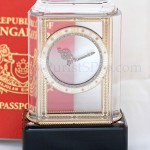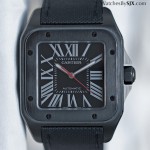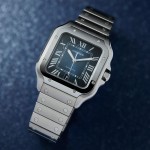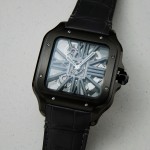Hands On: The Cartier Santos in End-to-End Titanium
Subtly yet very different.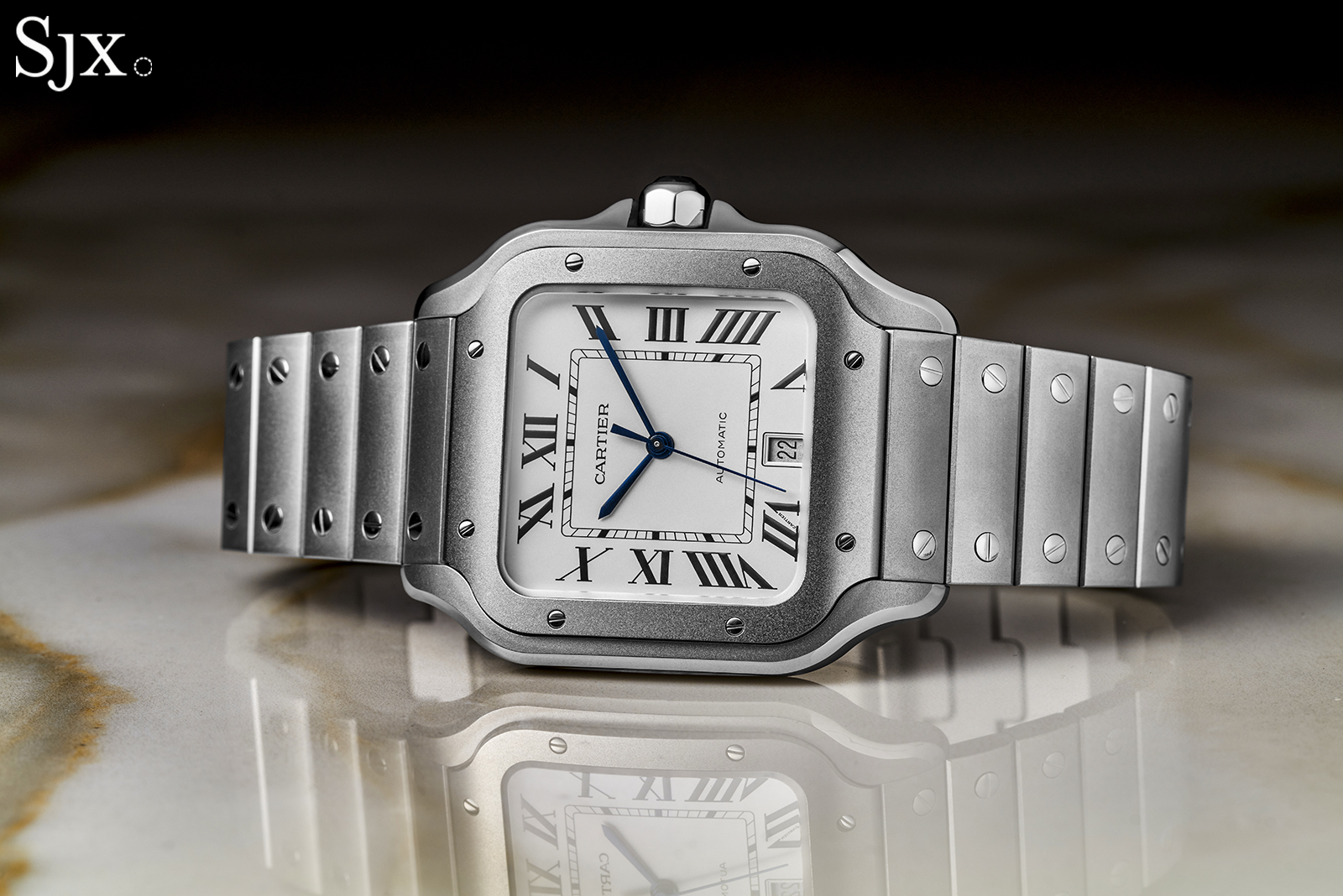
In a first, Cartier has just unveiled the Santos de Cartier LM in titanium. Its flagship sports watch now features a case and matching bracelet in matte, bead-blasted titanium – specifically grade 23 titanium – while retaining all of the other familiar Santos design elements, including the exposed screws and traditional silvered dial.
The Santos in titanium is powered by the same industrial 1847 MC movement found in its steel counterpart, and costs about 20% more, but has a great deal more tactile appeal. The watch is large, lightweight, and low-key.
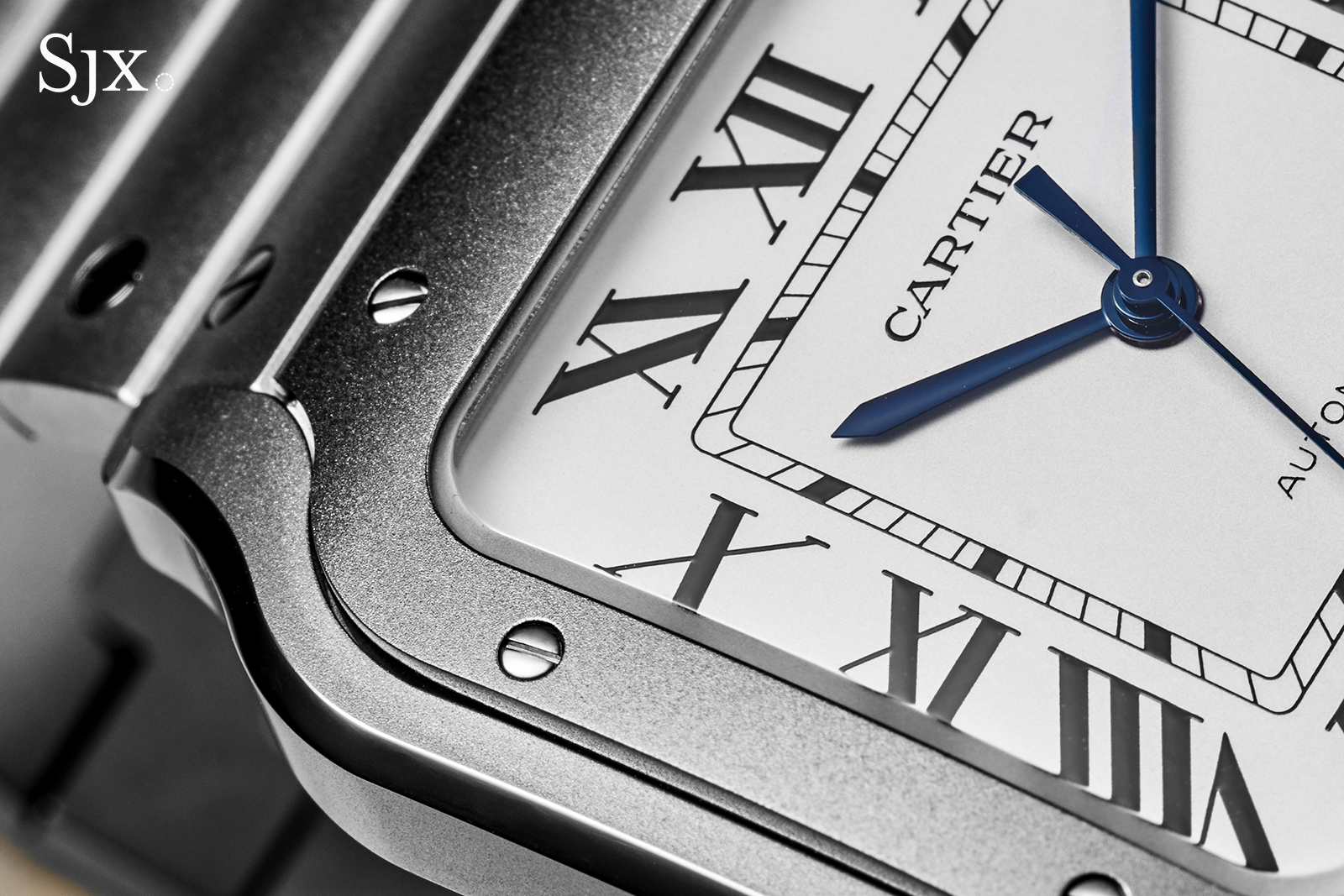
Initial thoughts
The Santos was originally conceived as a sports watch in 1904, albeit not of the sort known today. The original was an aviator’s watch, but a tiny and thin watch more comparable to a 21st century dress watch. That history, however, meant that Cartier has rolled out several sporty-ish versions of the Santos in the past. It’s surprising that it took Cartier this long to put together a Santos in titanium.
The smooth, blasted case finish has a great deal of tactile appeal, and the muted, matte aesthetic is equally appealing. Some might see this as being way too similar to the steel model – the two are indistinguishable at a distance – but that is part of its appeal.
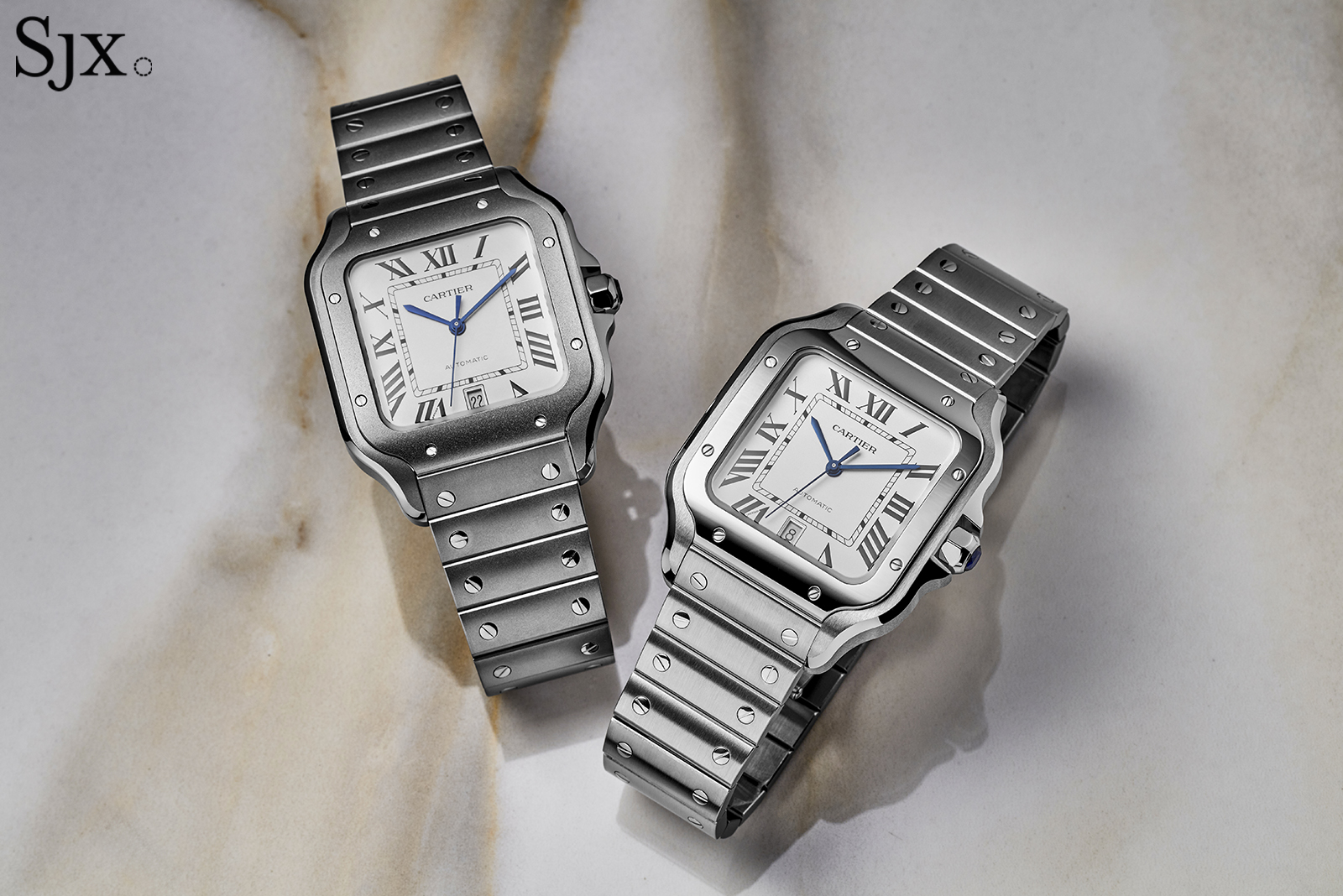
Almost twins, titanium (left) with a bead-blasted finish, and steel with a brushed finish and polished bezel
Though the material is different, the exterior finishing is almost identical to that of the steel model, except that the brushed finish of steel is replaced with a fine bead-blasting. The edges still retain the wide, polished bevels that give the case and bracelet a little bit of refinement.
While it looks more robust, the bead-blasted finish actually shows wear more easily than brushed steel. It’s less convenient in that respect, but I would opt this over brushed steel simply because it looks cooler.
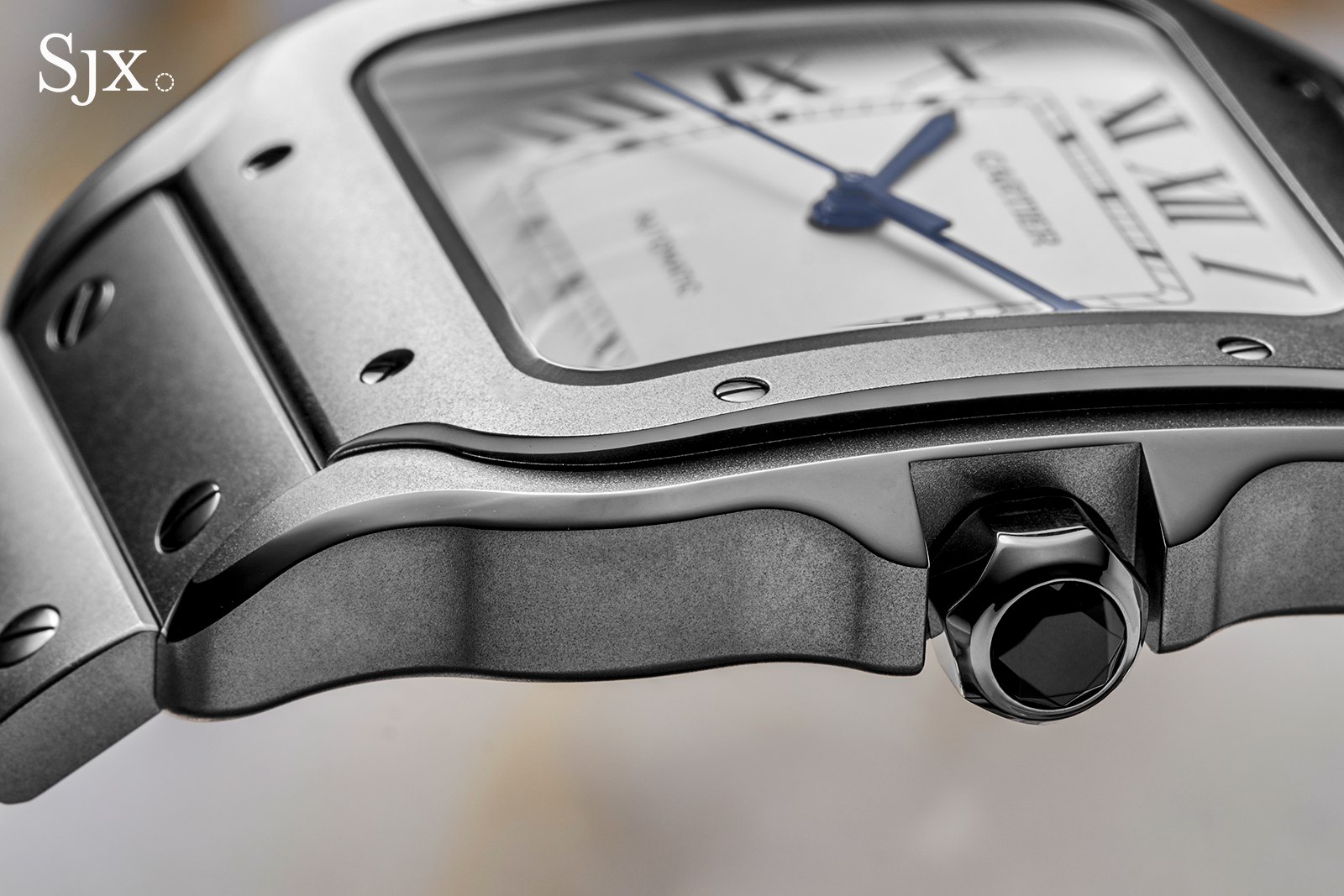
The only weakness of the watch is arguably the 1847 MC movement, which is fortunately concealed behind a solid back. The calibre is a workhorse automatic that is no doubt a good performer, but it is too industrial in both finish and style. Cartier can do better – the brand does, in fact, have other in-house calibres that are a step up – but the 1847 MC was probably pressed into service because the Santos in titanium is an entry-level model.
That’s especially so for a watch that retails for bit over US$11,000 – or about US$2,000 over the steel equivalent. That’s more than the typical industrial premium for steel versus titanium. That said, I would still pick this titanium version over the steel because it looks and feels that much better.
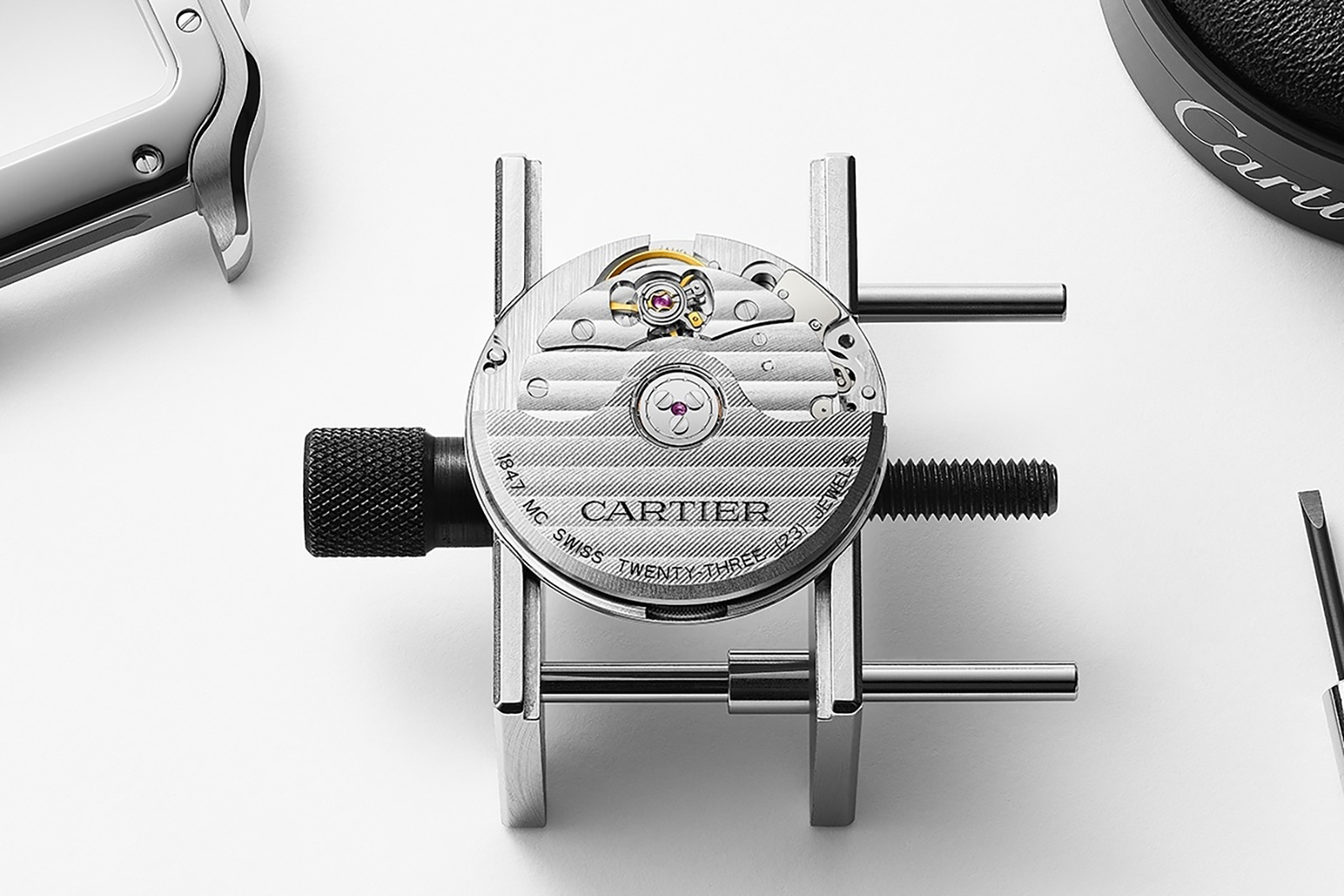
The 1847 MC. Image – Cartier
Lastly, the Santos in titanium is delivered with an additional strap gratis. It’s an integrated nubuck alligator strap with a folding buckle that matches the aesthetic well, but then the appeal of the titanium bracelet is lost.
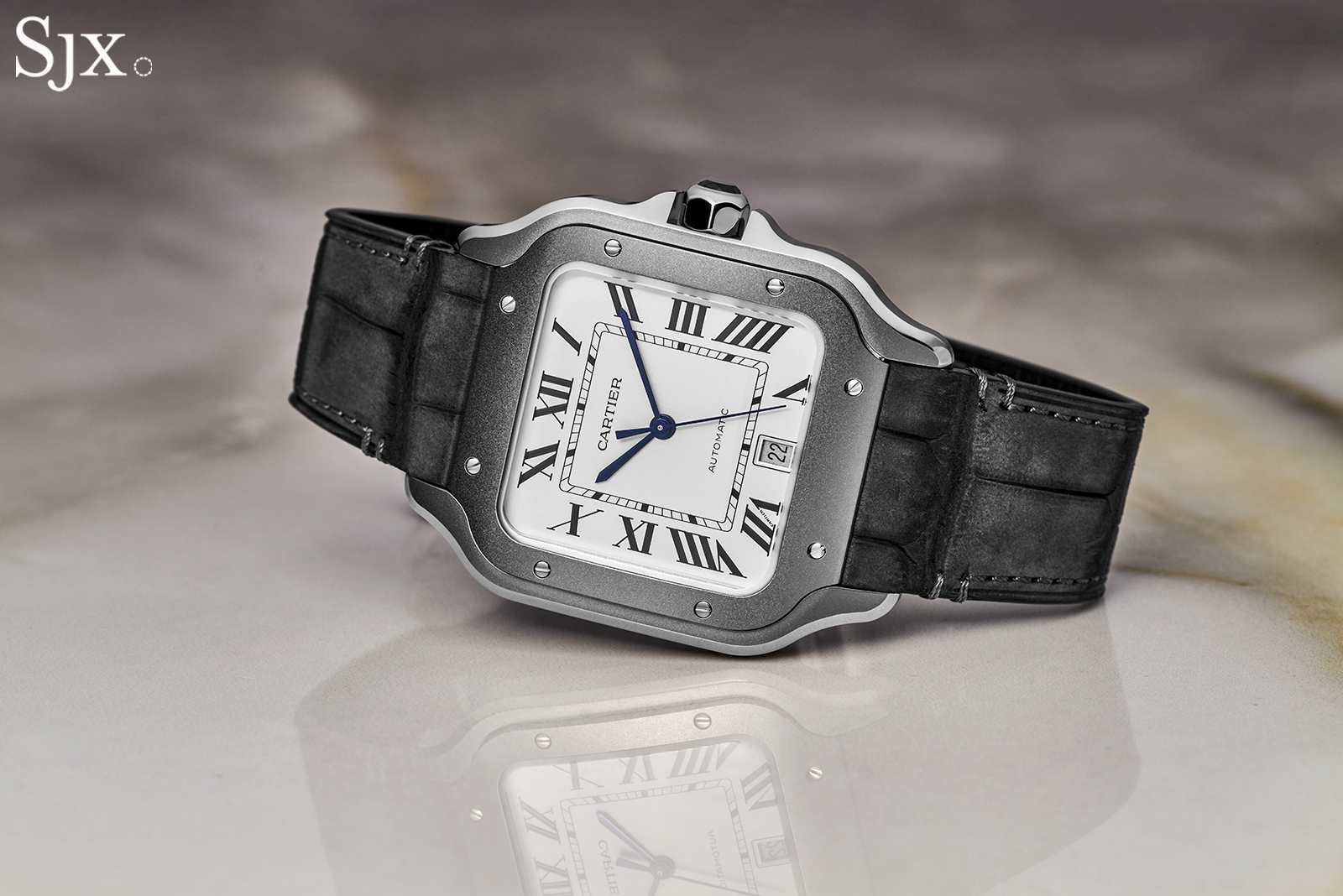
Santos de Cartier
Cartier has iterated the Santos countless times over the model’s 121-year history, but the latest version is the first in titanium (leaving aside the slim Santos-Dumont that is more of a formal dress watch). The material makes sense given the aviation heritage of the Santos, and also suits the large-format design.
The Santos LM case is largish, but not oversized, and the use of titanium gives it a pleasing, easy feel. The bead-blasted finish results in a silky surface that enhances the appealing feel.
The case isn’t huge by modern standards at 39.8 mm wide and 9.38 mm in height, but it is quite long. Add to that the squarish shape and the result is a watch that feels larger than it measures, which is where the titanium comes in handy since it reduces the weight. The matte finish on the titanium also seems to reduces the visual size slightly too.
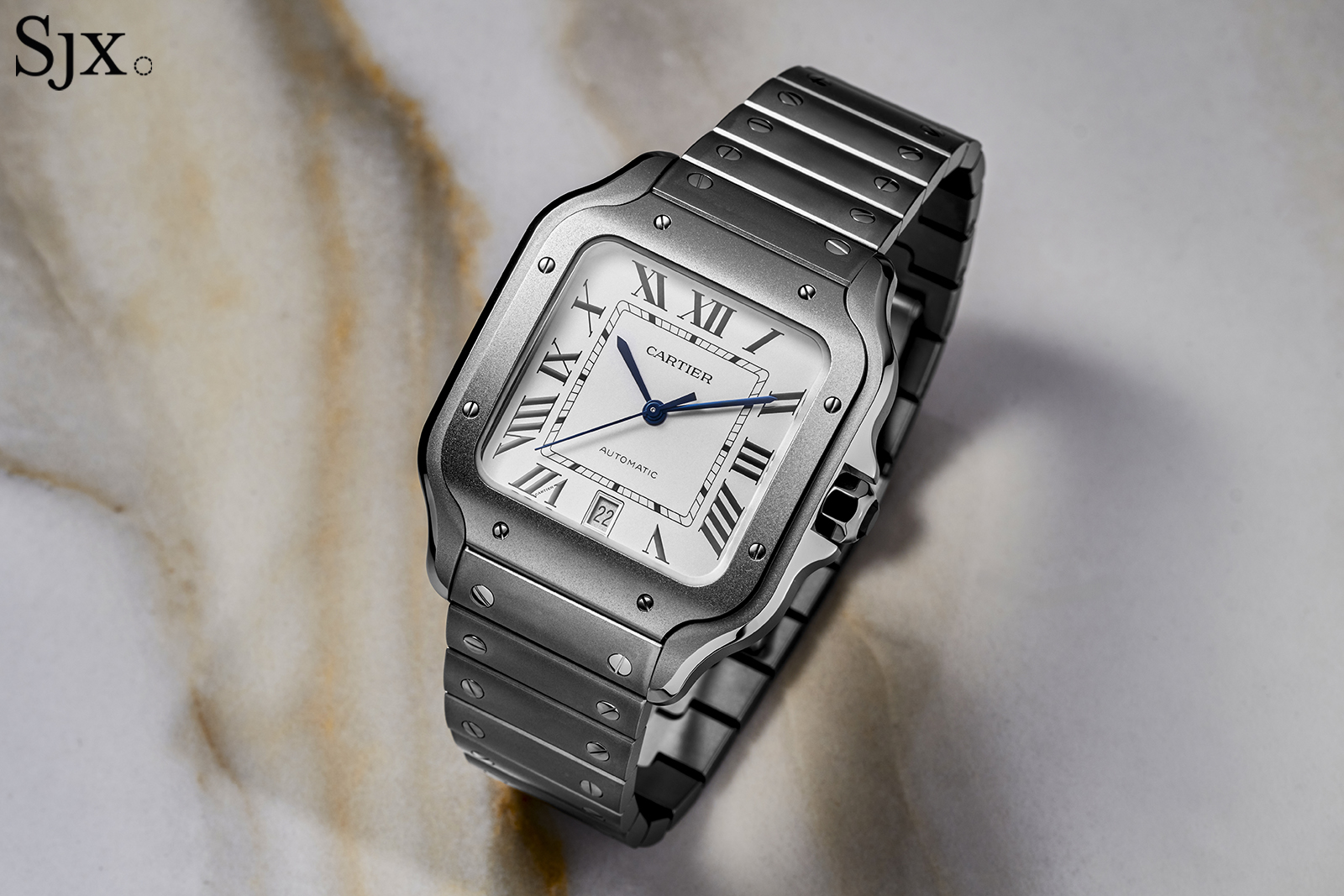
The titanium alloy employed for this Santos is slightly different from the typical grade 5 alloy widely used in watchmaking. It is instead grade 23, also known as grade 5 ELI, with the suffix short for “Extra Low Intersistal”, referring to the lower quantity of additives like iron and oxygen in the alloy.
Grade 23 titanium does have some advantages over the titanium alloys more common in watches like better toughness and ductility. I assume the use of grade 23 is due to the specific manufacturing techniques for the titanium parts, since the specific material characteristics do not matter in any practical sense for a watch.
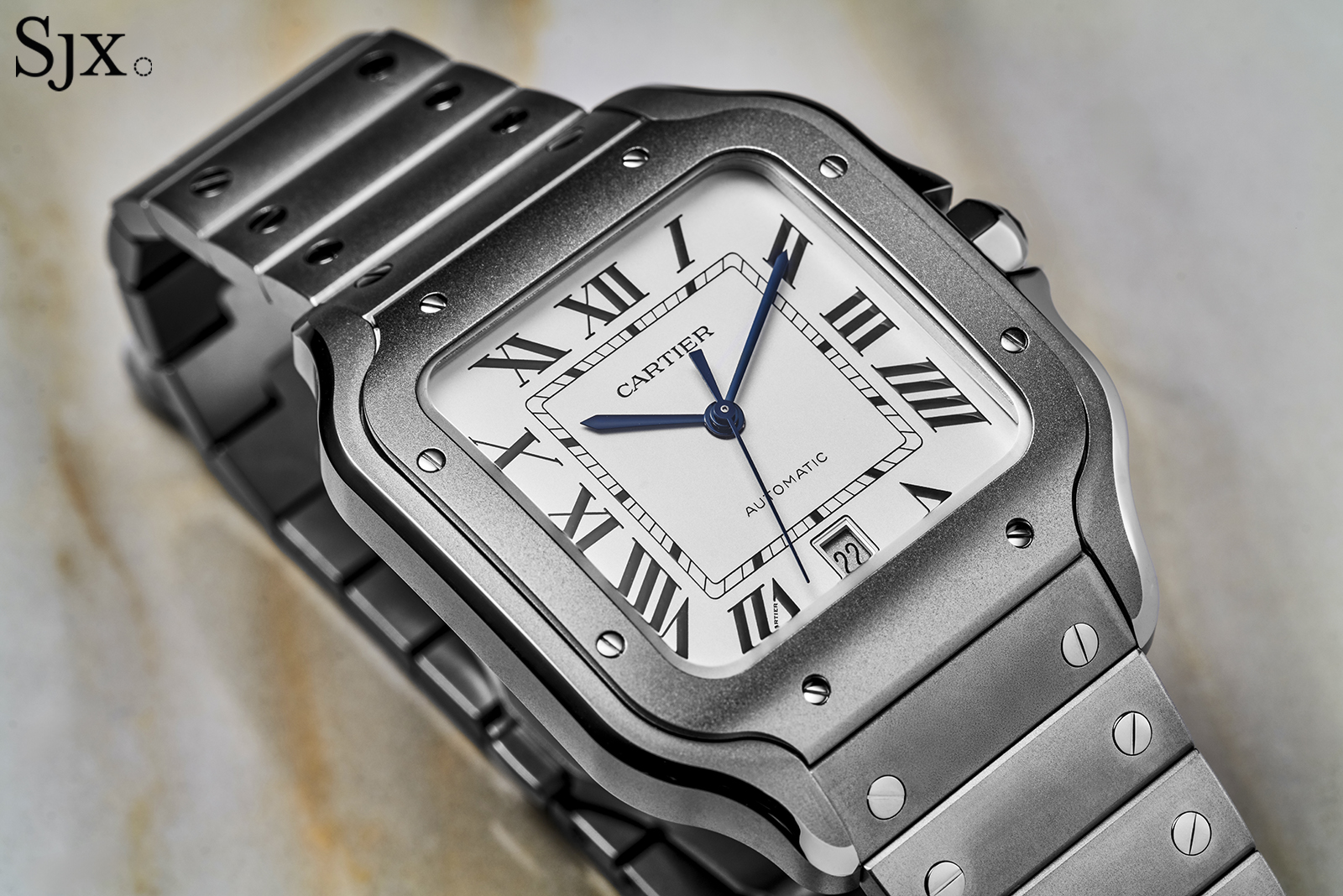
The titanium parts have an attractive, uniform finish across the case and bracelet. Nearly all surfaces are bead-blasted, while the edges are accented with polished bevels.
The wide bevels along the lengths of the case continue onto the links of the bracelet, which adds some sophistication to the look, which is otherwise muted and minimalist. The signature polished screw heads on the bezel and bracelet also contribute to that effect.
According to Cartier, the polished bevels on the case and bracelet are polished by hand. I have seen this process being done at the manufacture, and it’s a little bit of craftsmanship in an otherwise industrially produced watch.
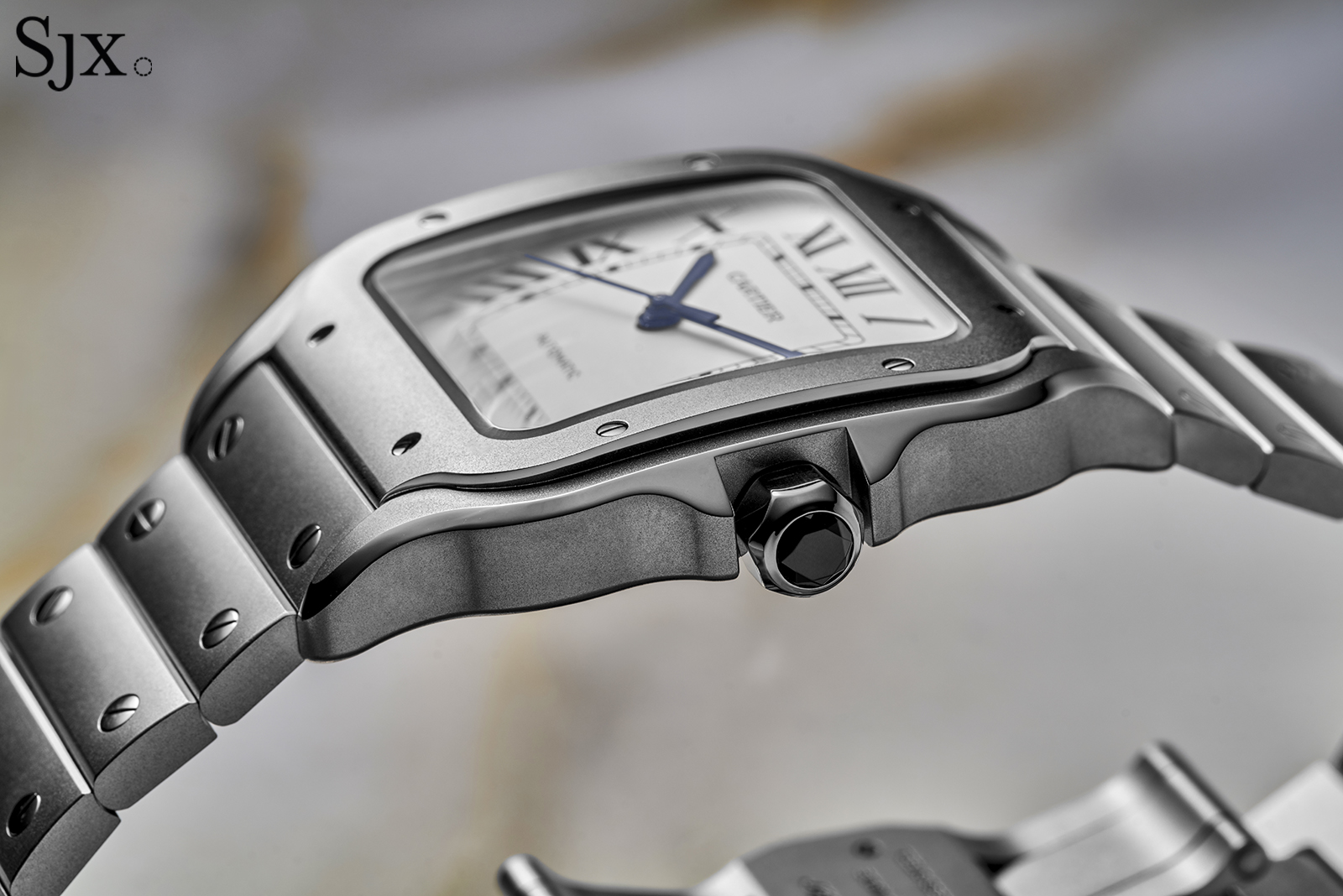
The dial is identical to that of the steel model, which was no doubt a conscious design decision to make the titanium version different, but only subtly so.
The dial is silvered with the requisite Cartier elements, a railway minute track, Roman numerals, blued steel hands, and a “secret signature” incorporated into the “VII”. It’s certainly a classic design that needs no change, but I feel Cartier could and should have done a little more to set this apart from the steel version, especially since it’s priced at a higher-than-average premium for steel-to-titanium.
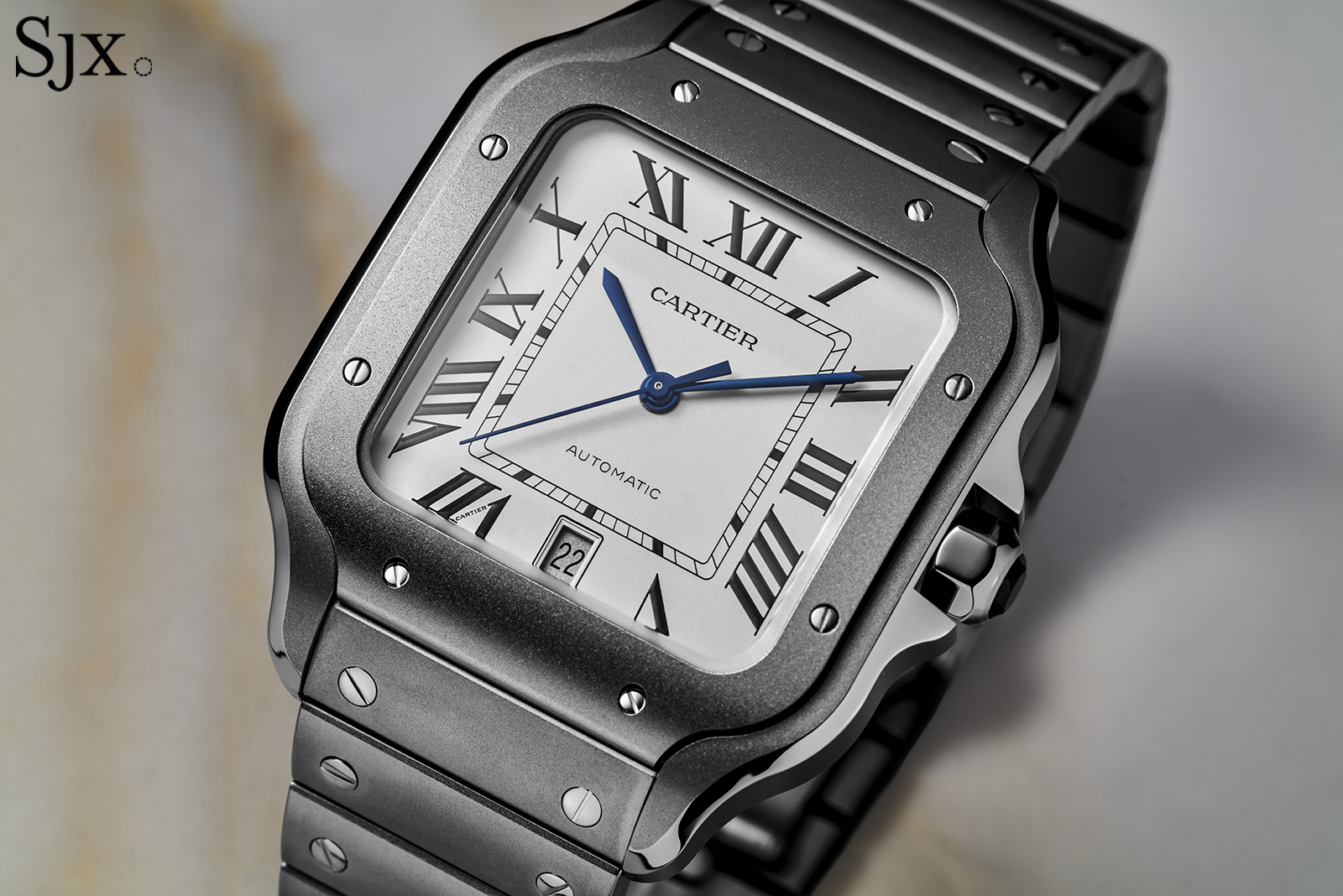
Quick but not smart
Like all current Santos models, the titanium version is fitted with the “QuickSwitch” mechanism that allows for easy removable and exchange of the bracelet. The process is really a quick switch: depress a tab on the back of the strap or bracelet and it slides out. However, this means the leather strap is a little stiff due to the insert at the ends that contains the mechanism.
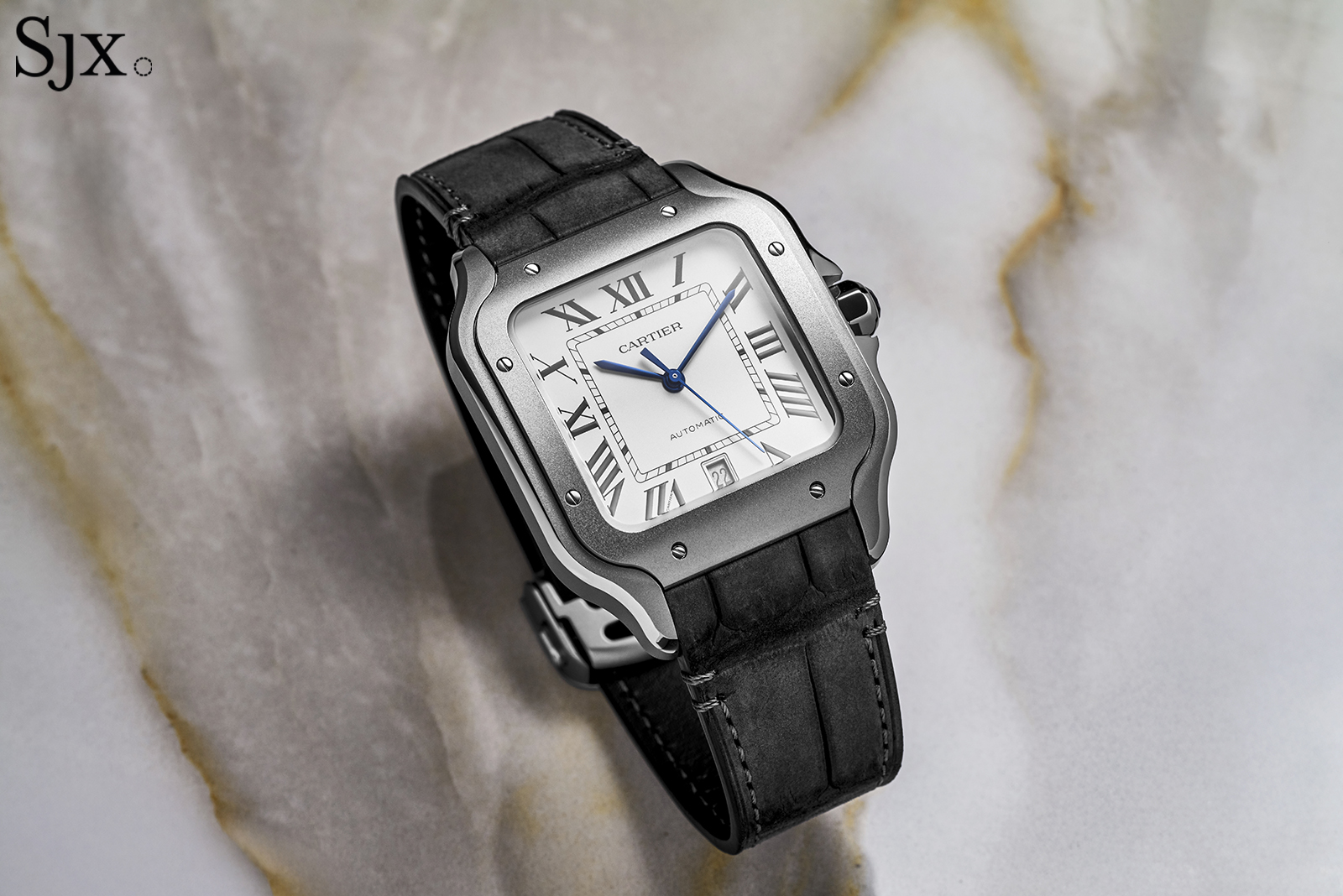
Notably, the titanium bracelet is missing the SmartLink system found in the steel model. SmartLink is a tiny button on the back of each link that allows easy sizing of the bracelet by removing or adding links, but the mechanism is “not compatible” with titanium according to Cartier, probably due to reasons of titanium’s physical properties.
As a result, the titanium bracelet has to be sized in the traditional way, by removing the screws that secure the links. This is a minor inconvenience and not a factor in the purchasing decision in my view.
Key facts and price
Cartier Santos de Cartier LM
Ref. WSSA0089
Diameter: 39.8 mm
Height: 9.38 mm
Material: Titanium
Crystal: Sapphire
Water resistance: 100 m
Movement: 1847 MC
Features: Hours, minutes, seconds, and date
Frequency: 28,800 beats per hour (4 Hz)
Winding: Automatic
Power reserve: 36 hours
Strap: Titanium bracelet, additional alligator strap with folding clasp; both with “QuickSwitch” release system
Limited edition: No
Availability: Starting November 1, 2025 at Cartier boutiques and retailers
Price: US$11,500; or 15,100 Singapore dollars
For more, visit Cartier.com.
Back to top.


